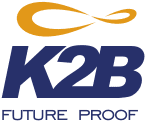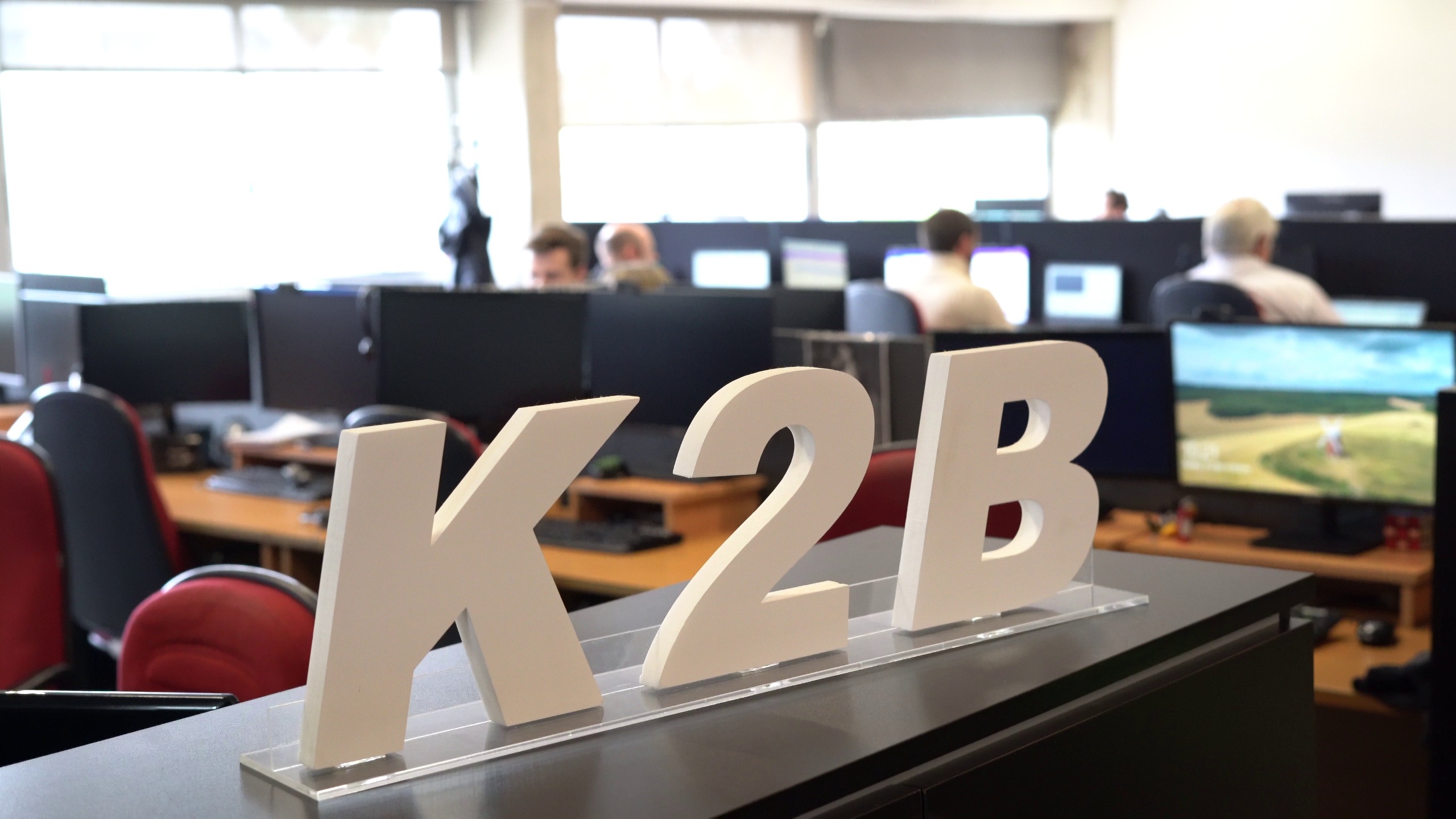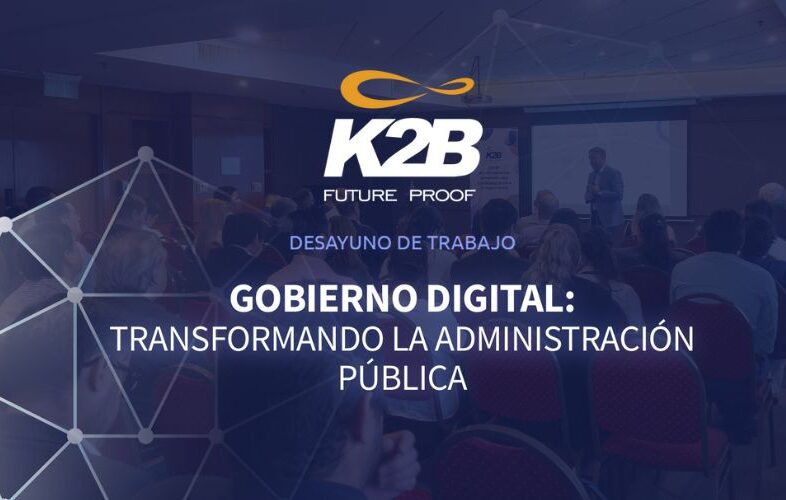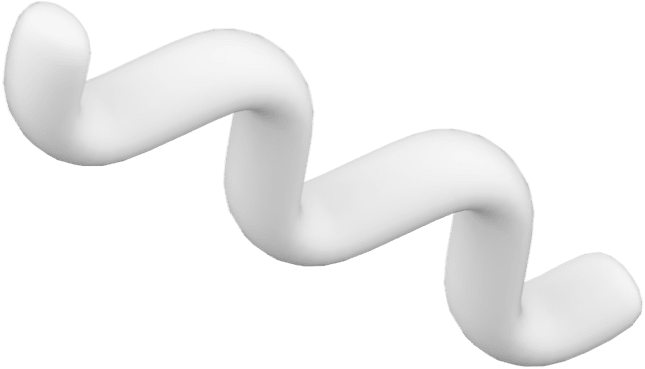Do you know the benefits of having an Interconnection Platform for your business to prosper? Here we tell you the 4 most important aspects to consider when choosing that ERP that will make you succeed.
Companies of all sizes, whether large enterprises or SMEs, are well aware of this: Companies with a technology department, and specifically, with the ability to develop their own business needs, often face such high demand for requirements that it can become overwhelming and exceed the capabilities of the internal development team.
We are fully immersed in the reality of Digital Transformation, and businesses – regardless of their nature – need to have technological differentiators to survive. These differentiators should enable unparalleled processing speed, organize resources, and provide precise knowledge of processes, allowing the focus to be on growing the business, rather than wasting time and resources managing valuable company data.
The essence of the K2B ERP Interconnection Platform is to support the technology departments of companies so that they can focus on adding value to the business.
Instead of investing all their time in developing or maintaining management systems, it suggests that the management system also supports innovation by enabling interoperability with specific systems, acting as a catalyst for change and generating continuous improvement opportunities. Additionally, it promotes significant cost reduction and increases productivity in organizations.
With that said, let’s explore the virtues of an Interconnection Platform with its 4 reasons to choose K2B ERP:
1. Versatility and Technological Security
When choosing an ERP, it is vital to consider the laws of different countries and the ability to adapt to various regulations, practices, and customs. Furthermore, it should be capable of adapting to changes in the business itself, such as technological evolution. The contemporary world is highly dynamic, but technological dynamics are exponential. In essence, a modern ERP for today’s times must be future-proof. True digital transformation of a company occurs when all its business processes are integrated into a future-proof ERP.
Incorporating advances in different systems and multiple technological languages is the main characteristic of the K2B ERP Interconnection platform, which, as its motto suggests, is future-proof.
2. Agile, Dynamic, Iterative Methodology
The implementation methodology should be consistent with your business and corporate culture. Agile methodology is the most versatile and dynamic for the current, ever-changing state of the technological and business world. Development through iterations and a fluid DevOps approach allows continuous adaptation and improvement of the ERP until implementation.
With the K2B ERP Interconnection platform, implementation follows a methodology that consists of four stages:
- Definition: The strategy to be used is defined based on the client’s reality. It is determined whether the implementation should be by module or process, by company or business area, depending on the needs.
- Modeling: Data is loaded, and configuration is performed to customize client requirements.
- Training and Pilot: Key users are trained, and they cascade the training to the rest of the organization. A pilot test environment is prepared.
- Production and Continuity: After validating the pilot, it’s time to put the ERP into production, along with a continuity phase involving direct support from the implementation team.
3. Technological Integration and Customization Possibilities
The definition of an ERP depends on the client’s reality. Sometimes, basic functionalities do not vary between different organizations, whether it’s a government institution or a private company involved in imports, for example.
But what happens when it’s necessary to customize operations to represent the specific characteristics of the business? An ERP should be a secure interconnection platform that allows the integration of specific solutions, either through custom developments or specialized solutions. In this scenario, these are the points to consider for robustness:
- Service-Oriented Architecture (SOA), facilitating connectivity with other applications.
- The ability to incorporate components specific to the organization’s needs.
- Product updates, flows, and technologies without affecting or altering custom developments.
- Flexible software characteristics that can adapt to process specificities, allowing the creation of new modules.
K2B features a development framework with K2B tools designed to solve management problems that businesses in various industries may encounter. It allows for substitution, extension, and integration, taking into account interoperability with external systems, securely through GeneXus Access Manager (GAM) Web Services, enabling integration with different systems.
One of the keys to K2B’s integration and customization capabilities is that it is developed 100% in GeneXus, allowing it to participate in major architectures and integrate with the most important and popular programming languages on the market.
4. User Experience (UX/UI)
Another crucial aspect of an ERP is its usability and user experience because this directly impacts productivity. Users of a platform managing and administering a business come from different backgrounds: top executives, operational staff, users with extensive experience in interacting with systems for daily operational data entry, and users with little experience who are encountering process screens for the first time. An optimal ERP design should consider the needs of different user profiles, with a fast learning curve.
In this regard, it is essential to incorporate a Design System that provides consistency between screens, both for interaction and communication, strengthening the User Experience (UX) and increasing productivity by allowing users to move quickly between interactions without friction.
UX should be highly intuitive and provide the necessary screens to achieve objectives: capturing, recording, visualizing, or analyzing data. In this regard, K2B has its own Design System called Rigel.
The User Interface (UI) is streamlined in the K2B ERP Interconnection Platform, which is process-oriented, thanks to the inclusion of more than 140 predefined processes with GeneXus Business Process Modeler (BPM). This allows modeling for each of these customer processes.
Finally, analytics is another value-added component. Managing analysis for Business Intelligence (BI) projects that transform information into knowledge helps make quick decisions and enriches operations by providing useful and timely data.
In conclusion:
ERPs today, although they are a key element of companies, as they solve administrative, financial, and resource management problems within organizations, can be seen as a commodity.
However, in our current economy, ERPs act as connectors, not only within the ecosystem of applications and processes within organizations but also with systems beyond the company, which are now a fundamental part of digital transformation.
The only way for an ERP to survive in the future is to participate in that ecosystem, to integrate and interoperate quickly and user-friendly. If ERPs do not transform, they will not be able to be part of that digital transformation or support organizations in making that change. That’s why K2B is more than just an ERP today; it’s an Interconnection Platform.
Undoubtedly, using an ERP will boost your business and give you a competitive advantage over your competition. These systems make processes more effective and efficient, creating sustainable benefits over time.
Having the K2B Interconnection Platform also ensures that your business is implemented on a platform that is resistant to technological changes, integrating different regulations and methodologies from various countries where it operates, with a user-friendly and intuitive UX/UI. Can you ask for anything more?”







